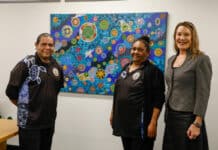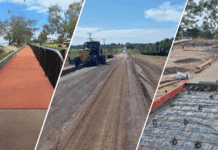
It’s relatively new technology and it’s making waves, as well as any object your imagination can conjure, at Bundaberg Regional Libraries.
Library members can now submit their projects to be printed in one of two 3D printers available at Bundaberg Regional Library for a small fee which covers the cost of creation.
Bundaberg Regional Council’s Community and Cultural Services portfolio spokesperson Cr Judy Peters said the technology used a special software and thermoplastics known as filament to generate each object.
“The possibilities for printing are endless,” Cr Peters said.
“At the library, staff have used the printer to create replacement parts for some of our board games and various odds and ends for use around our libraries.
“Last year staff printed a full size chess set using biodegradable thermoplastics.”
Cr Peters said the library had its first request from a customer last week who wanted to print a custom component for a home computer network project.
“The customer was very happy with the result,” Cr Peters said.
“Our library acquired the new technology to enable us to deliver 3D printing and object design workshops to the public and with the intention of making a public 3D printing facility available.
“Not only do these 3D printers enable us to print custom, fit-for-purpose objects and novelty or replacement items but through our libraries they are enabling us to expose residents to a new and fascinating technology.”
Print jobs for the 3D printers must be no greater than 220mm x 140mm x 150mm.
How does 3D printing work?
Bundaberg Regional Libraries printers employ a process known as Fused Filament Fabrication (FFF), a type of additive manufacturing whereby thermoplastic is heated and extruded layer upon layer to form a 3D object.
During printing, the print head moves on its horizontal axis and the build plate slowly drops as each layer is printed.
The time it takes to print a 3D object varies greatly depending on the object’s size, design and quality and infill properties.
It is not uncommon for prints to take several hours to complete.
The process for having a 3D object printed at the library is:
1. Submit a 3D object file for verification and suitability assessment.
2. A staff member will assess the job and give you a price within five (5) business days.
3. Once paid for, the object is printed and ready for collection.
To find out more,
visit http://library.bundaberg.qld.gov.au/technology/3D-printing









